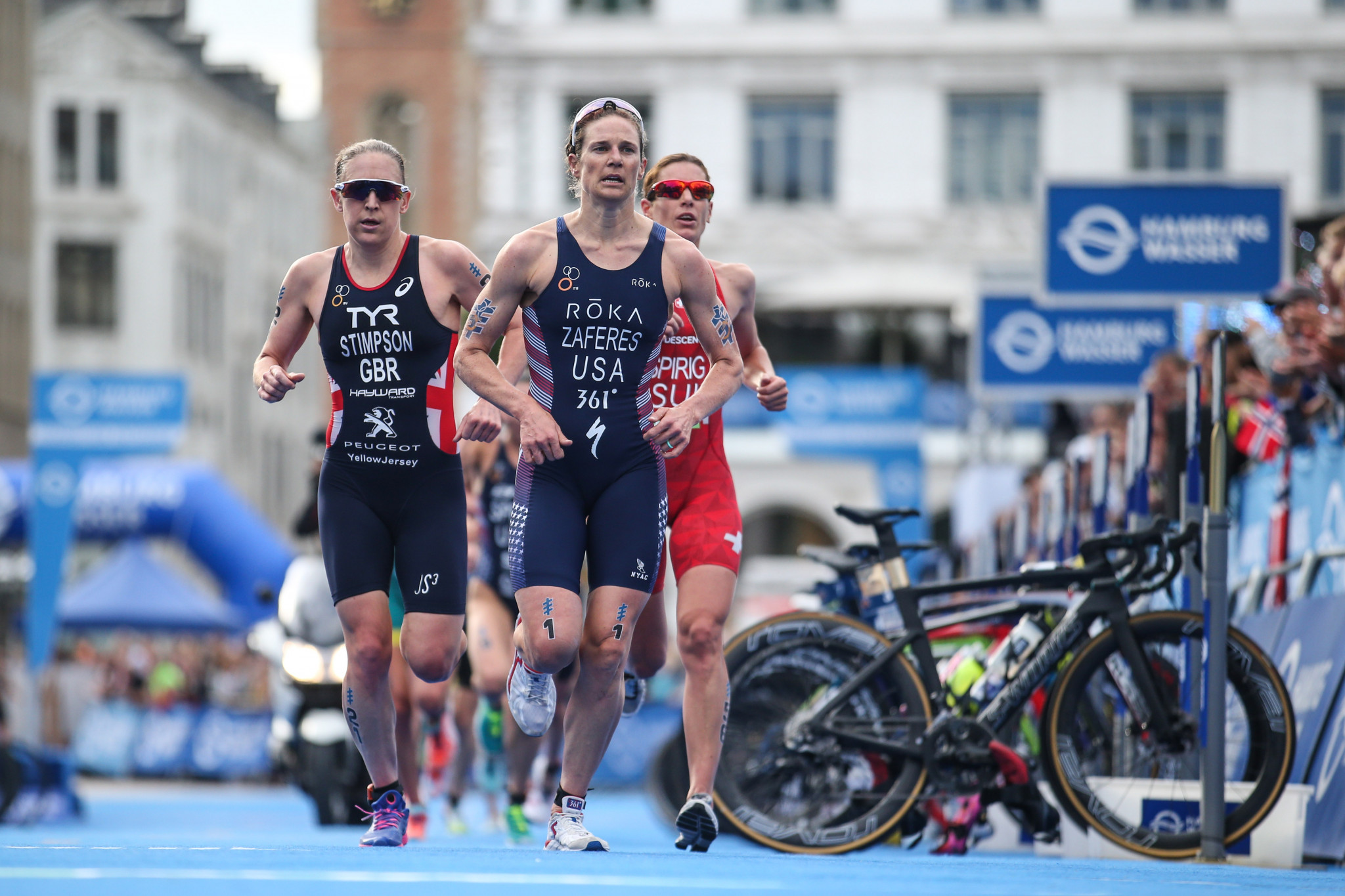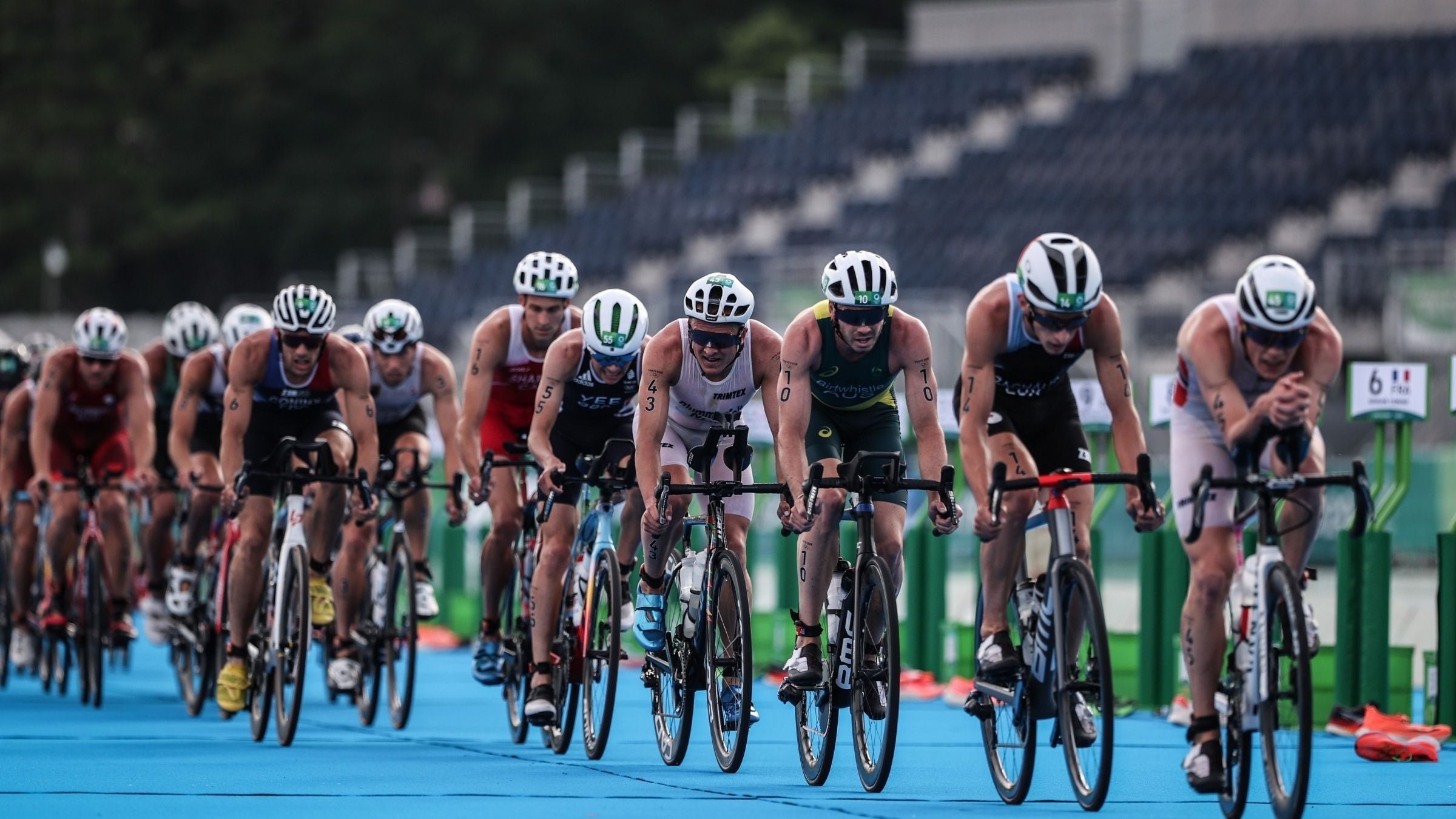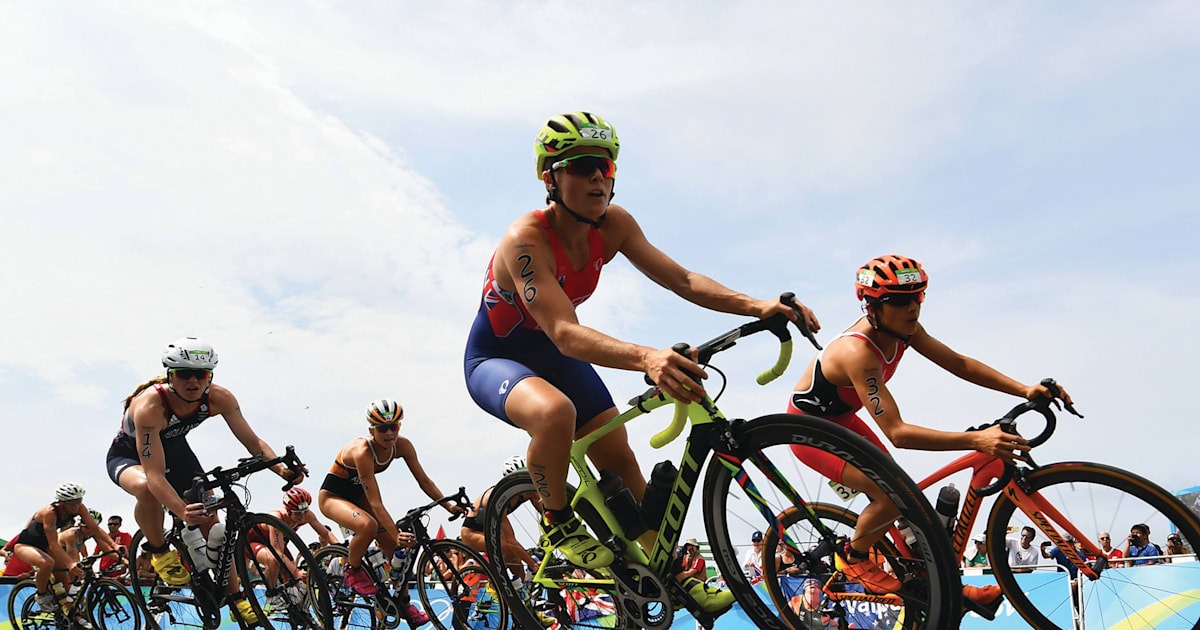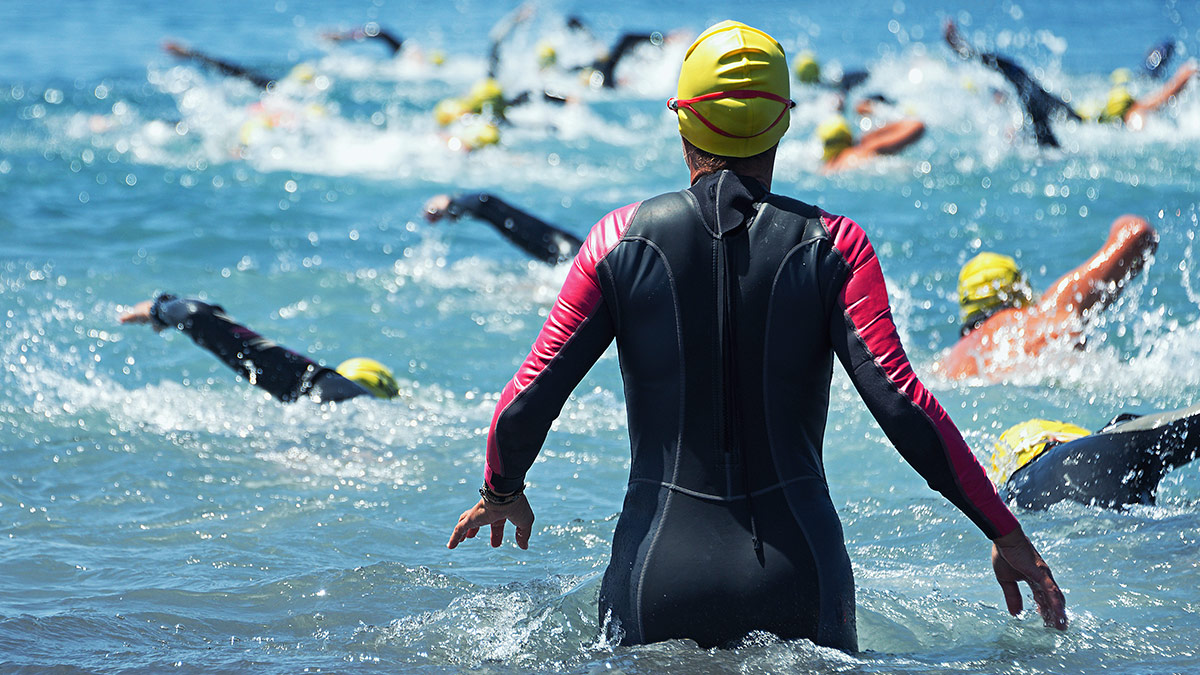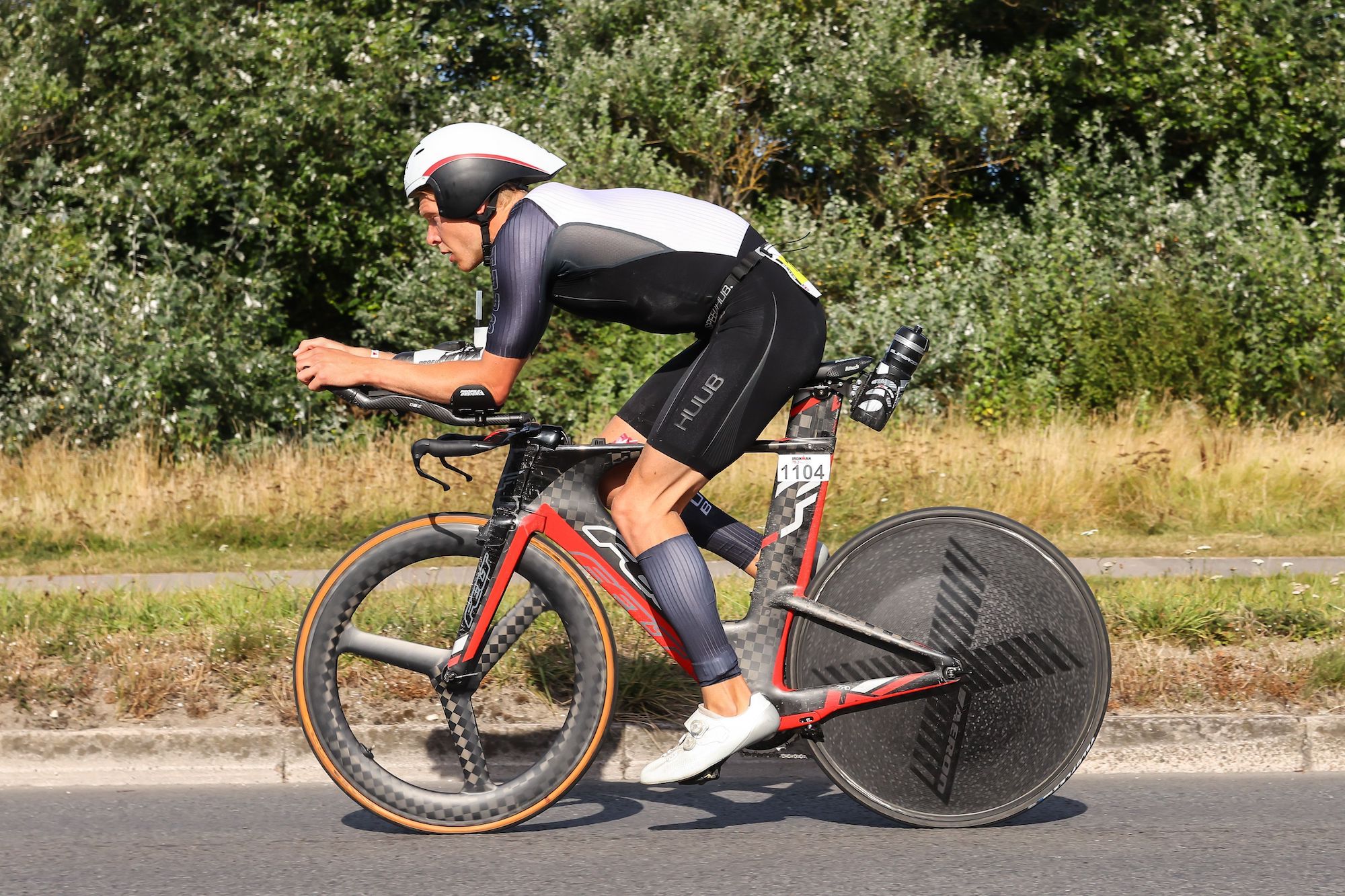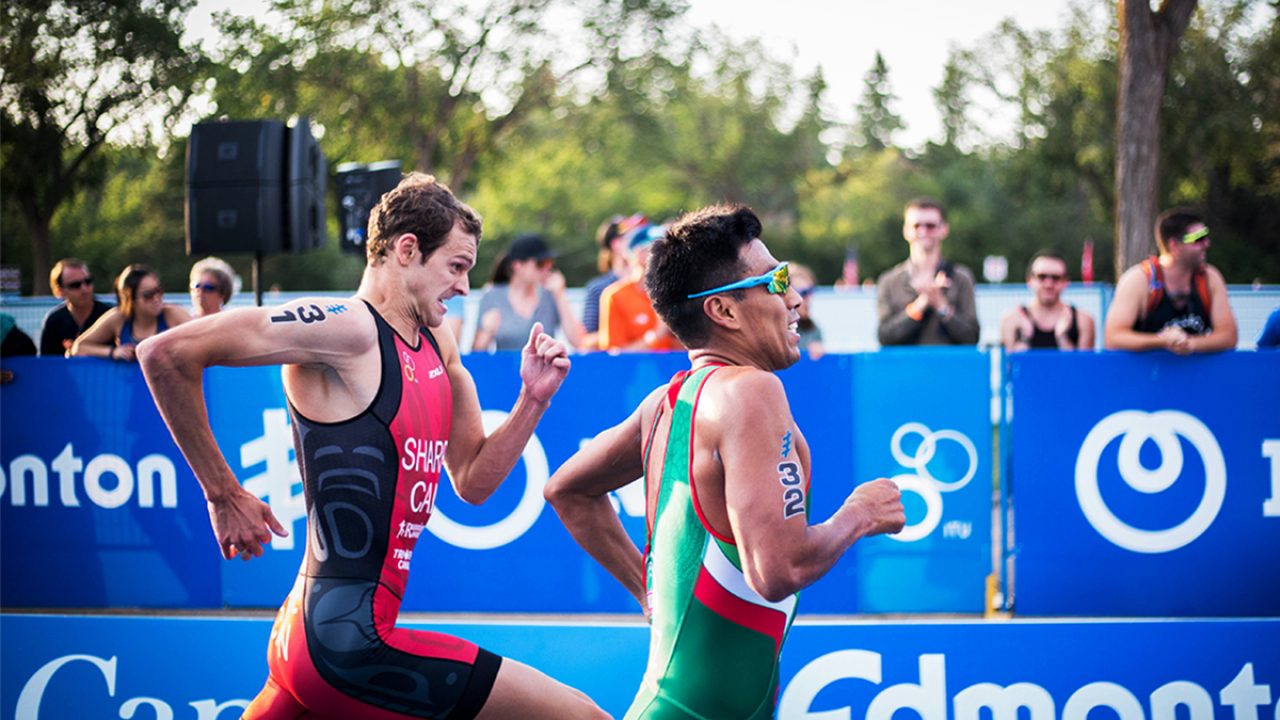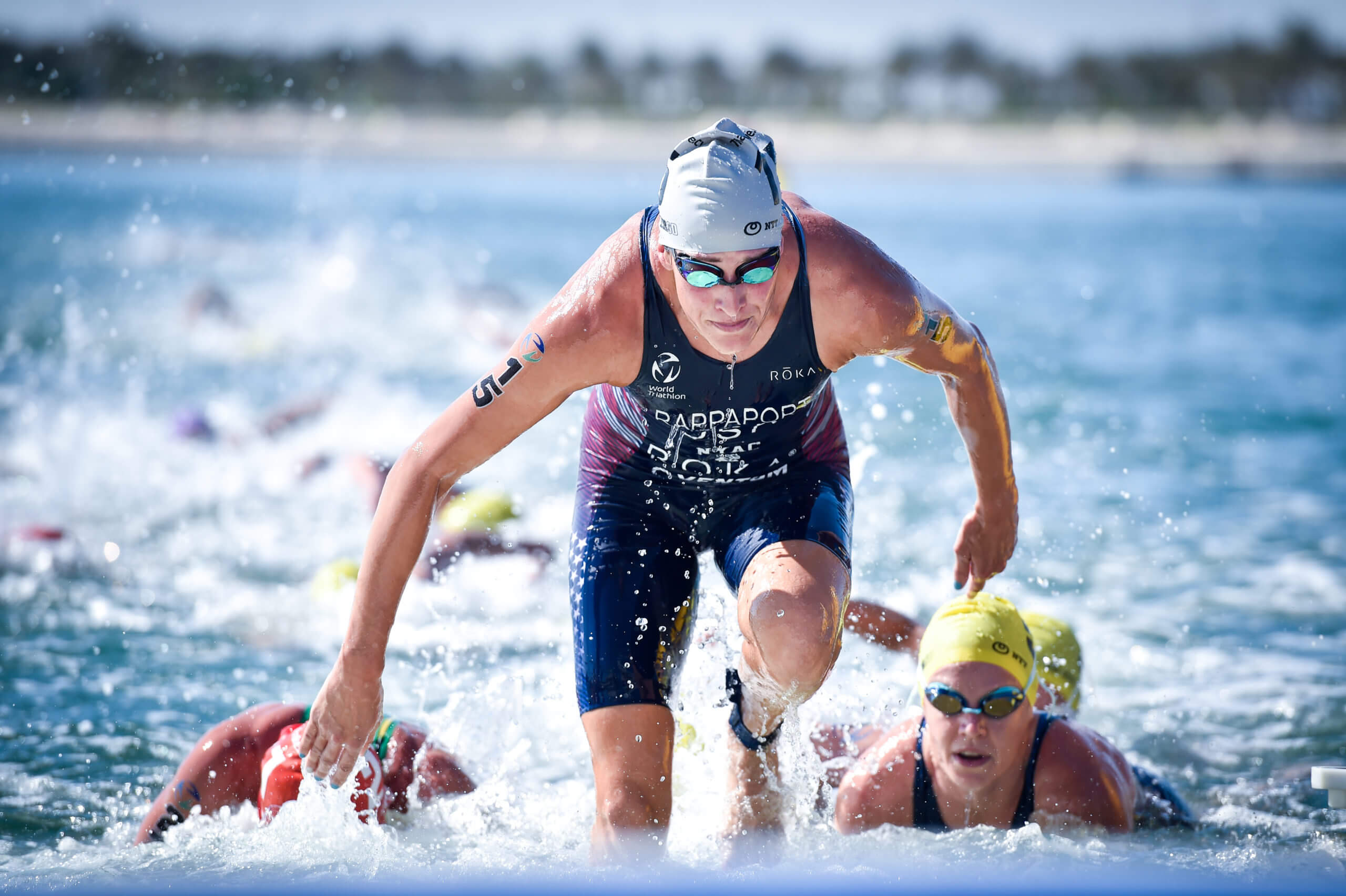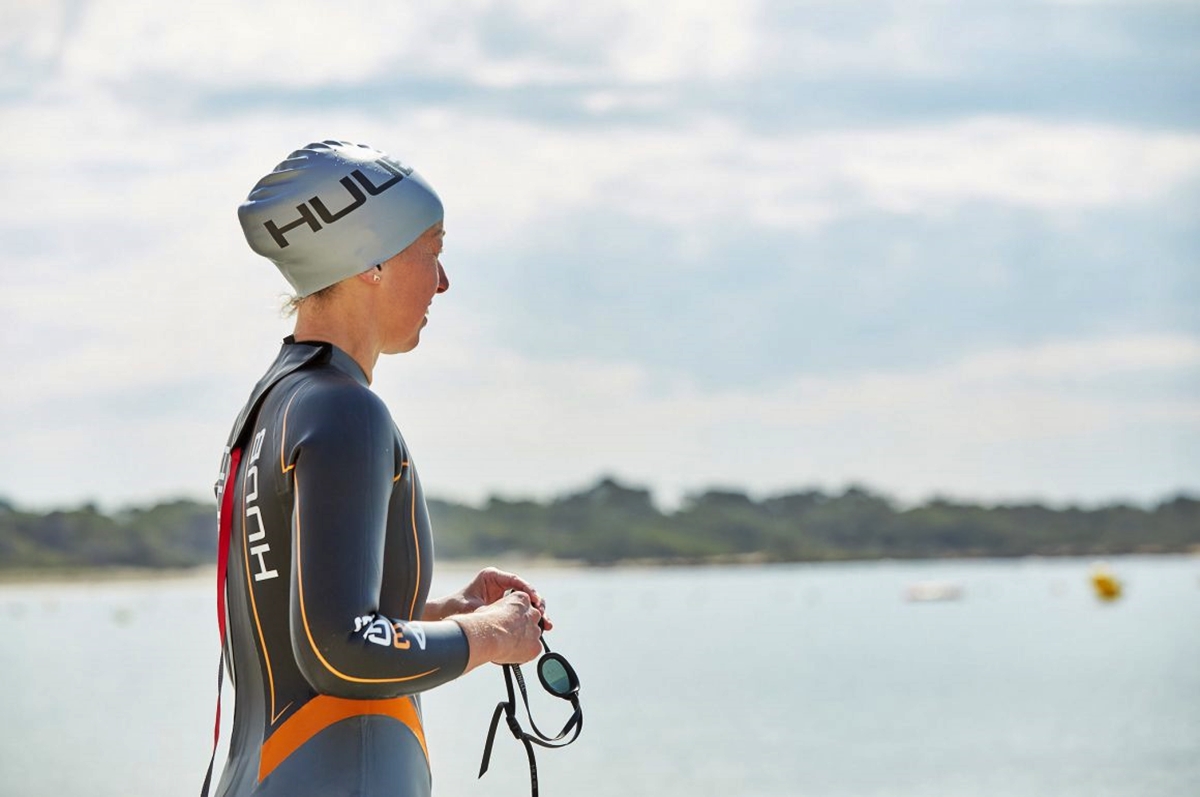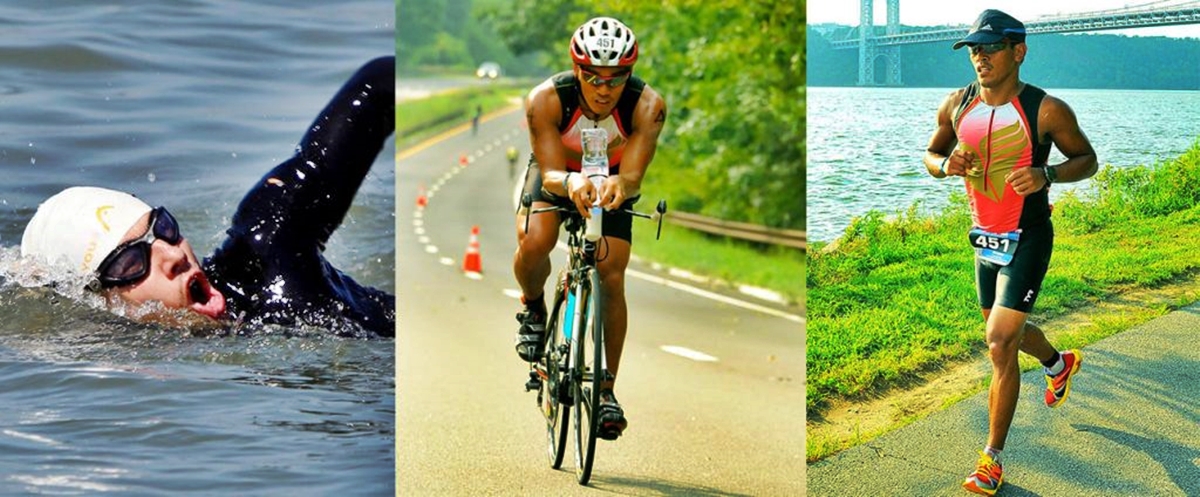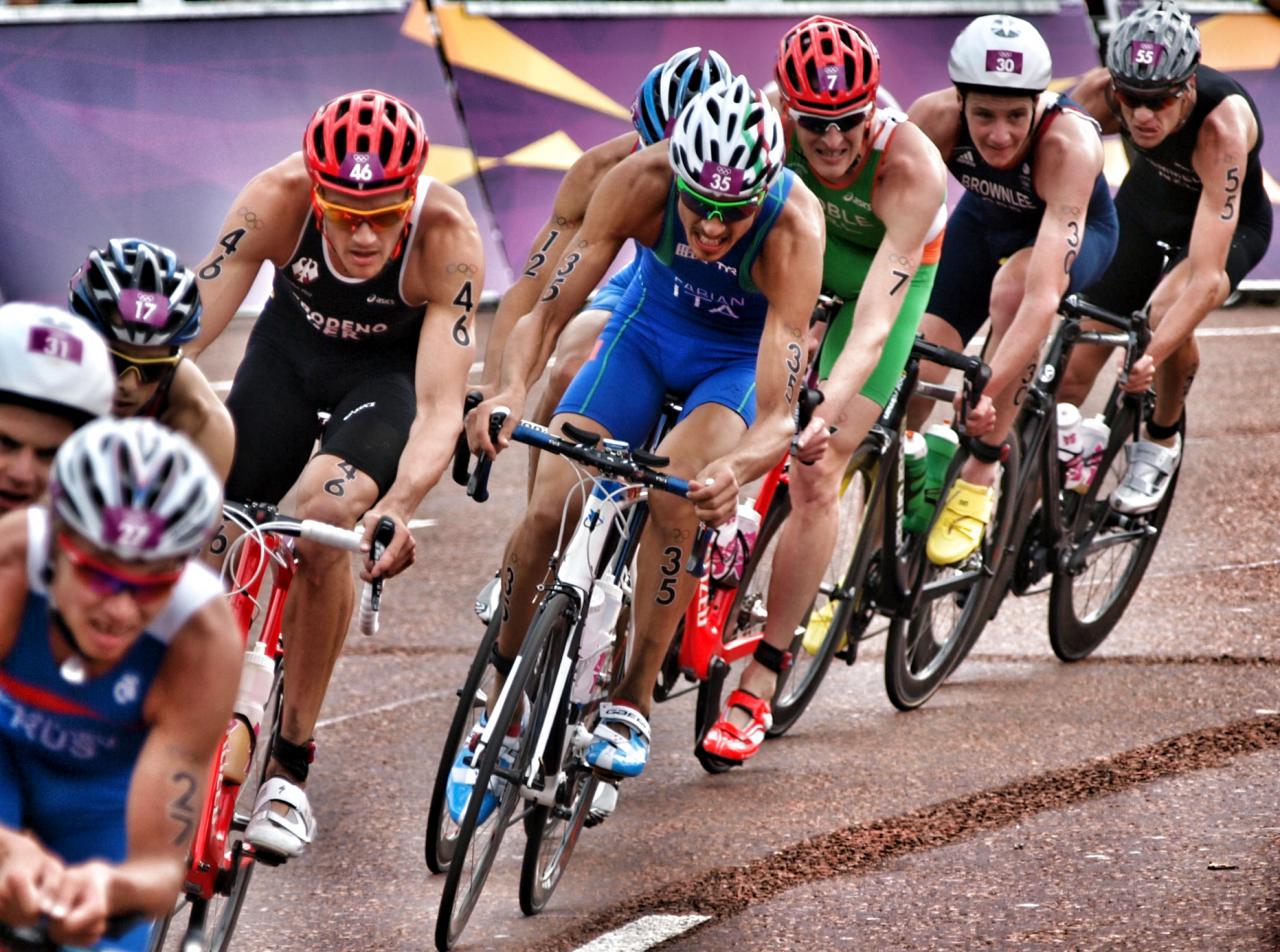

Featured
How Long Is An Olympic Triathlon
Modified: January 2, 2024
Discover the length of an Olympic triathlon and get inspired by featured athletes who conquer this ultimate endurance challenge.
Introduction
Welcome to the exciting world of Olympic triathlons! This multisport event is not for the faint of heart, as it pushes athletes to their limits both physically and mentally. Combining swimming, cycling, and running, the Olympic triathlon is a true test of endurance and athleticism.
Whether you are a seasoned athlete looking to challenge yourself or a spectator curious about the sport, this article will provide you with a comprehensive understanding of the length and components of an Olympic triathlon.
The Olympic triathlon is one of the most popular and prestigious events in the world of triathlon. It made its debut at the 2000 Sydney Olympics and has since captivated audiences with its thrilling displays of athleticism and determination.
While each leg of the triathlon presents its own challenges, the true magic lies in the transitions between them. Athletes must seamlessly shift from swimming to cycling, and then from cycling to running, in the fastest and most efficient way possible.
Throughout this article, we will explore the different legs of an Olympic triathlon, the duration of the event, and the factors that may affect its length. Whether you are considering participating in an Olympic triathlon or simply want to learn more about this exciting sport, join us as we dive into the details of this thrilling multisport event.
Overview of Olympic Triathlon
The Olympic triathlon is a multi-discipline sport that consists of three consecutive endurance events: swimming, cycling, and running. It follows a strict sequence, with athletes aiming to complete each leg as quickly as possible.
The swim leg is typically the first discipline of the Olympic triathlon. Athletes dive into the open water and swim a designated distance, usually ranging from 1.5 to 1.9 kilometers, depending on the specific race. This leg requires strong endurance and efficient technique, as athletes navigate through the water and contend with waves, currents, and the physical presence of other competitors.
Following the swim, athletes quickly transition to the cycling leg. They sprint from the water to the designated transition area, where they change into their cycling gear and mount their bicycles. The cycling leg usually covers a distance of 40 kilometers, and athletes navigate through a mix of flat stretches, hills, and descents. This leg tests their cycling skills, stamina, and ability to manage tactics in a dynamic and fast-paced environment.
Once they complete the cycling leg, competitors transition again, this time to the final discipline: the run. The running leg is a critical test of endurance, as athletes push themselves to complete a distance of 10 kilometers. This leg often takes place on a combination of road, trail, and sometimes even cross-country terrain. It requires mental resilience and physical strength, as athletes strive to maintain a steady pace and summon a final burst of energy towards the finish line.
Throughout the Olympic triathlon, athletes face significant physical and mental challenges. They must carefully manage their body’s energy reserves, endure fatigue, and adapt to changes in terrain and weather conditions. The triathlon demands not only physical prowess but also strategic thinking, as competitors must make tactical decisions to optimize their performance and stay ahead of the competition.
The Olympic triathlon showcases the sheer determination and perseverance of athletes. It is a true test of their all-around fitness, athletic ability, and mental fortitude. The combination of swimming, cycling, and running creates a thrilling spectacle that captivates both participants and spectators alike.
Now that we have an overview of the Olympic triathlon, let’s delve into more detail about the individual legs and the transition areas.
Swimming Leg
The swimming leg is the first discipline of the Olympic triathlon and sets the tone for the entire race. Athletes start with a mass dive into the water, usually in a lake, river, or ocean, depending on the location of the event.
The distance for the swim leg in an Olympic triathlon typically ranges from 1.5 to 1.9 kilometers (0.93 to 1.18 miles). This distance may be adjusted depending on the specific race and conditions. Athletes must navigate through the water using a combination of freestyle, backstroke, breaststroke, or butterfly stroke techniques to cover the distance as efficiently as possible.
The swim leg can be physically demanding, with competitors battling waves, currents, and other swimmers for space. This makes strategic positioning crucial in the early stages of the race to avoid unnecessary contact and maintain a consistent pace.
Swimming in open water adds an additional layer of complexity compared to swimming in a pool. Athletes must deal with unpredictable water conditions, such as choppy waves, strong currents, and varying visibility. They need to adapt their strokes and breathing patterns accordingly to ensure they keep moving forward effectively.
To prepare for the swimming leg of an Olympic triathlon, athletes undergo rigorous training in the pool and open water. They focus on building endurance, improving stroke technique, and practicing navigation skills. Open water training sessions are vital for acclimating to the different environmental factors encountered during the race.
During the swim leg, athletes wear wetsuits to provide buoyancy, insulation, and reduce drag. The use of wetsuits is regulated based on water temperature, with restrictions applied when conditions become too warm.
The transition from the swimming leg to the cycling leg, known as T1 (Transition 1), is a critical moment in the race. Athletes exit the water, remove their wetsuits (if necessary), and make their way to the transition area. Here, they quickly change into cycling attire, put on their helmets, and mount their bicycles to begin the next part of the race.
The swimming leg not only requires physical strength and endurance but also mental focus and strategic decision-making. Athletes need to choose the optimal racing line, navigate around other swimmers, and efficiently manage their energy to ensure a strong start to the triathlon.
Now that we’ve covered the swimming leg of the Olympic triathlon, let’s move on to the next discipline: the cycling leg.
Cycling Leg
The cycling leg is the second discipline of the Olympic triathlon and takes place immediately after the swimming leg. Athletes transition from the water to the designated transition area, where they change into their cycling gear and mount their bicycles to begin the race.
The distance for the cycling leg in an Olympic triathlon is typically 40 kilometers (24.85 miles). However, the specific distance can vary depending on the race and course layout. Athletes tackle a mix of flat stretches, challenging climbs, and exhilarating descents as they navigate the course.
During the cycling leg, athletes ride road bikes specifically designed for speed, efficiency, and aerodynamics. These bikes are equipped with gears to help manage different terrains and gradients encountered throughout the race.
A key aspect of the cycling leg is strategic pacing. Athletes must find the balance between maintaining a solid speed and conserving energy for the remainder of the triathlon. Experienced athletes carefully manage their effort levels to ensure they can perform well in the subsequent running leg.
The cycling leg incorporates tactical elements as competitors strategize and position themselves within the race. Drafting, or riding closely behind the rider in front to reduce wind resistance, is allowed in some triathlon events. Athletes often form packs or small groups to take advantage of this technique, working cooperatively to maintain high speeds and conserve energy.
Throughout the cycling leg, athletes must stay focused and alert to navigate corners, avoid obstacles, and adhere to traffic rules if the race takes place on open roads. Safety is a top priority, and athletes are expected to follow race regulations and guidelines to ensure a fair and secure competition.
As the cycling leg nears its end, athletes approach the second transition, known as T2 (Transition 2). Here, they dismount their bikes, store them in the designated area, and change into their running gear. The transition needs to be smooth and efficient to minimize time lost and maintain momentum.
The cycling leg of the Olympic triathlon demands a combination of physical strength, technical skill, and strategic decision-making. Athletes must demonstrate power and endurance while navigating the course and tackling varied terrains. They need to make quick, calculated decisions to optimize their performance and position themselves favorably for the final leg of the race.
With the cycling leg behind us, let’s now move on to the last discipline of the Olympic triathlon: the running leg.
Running Leg
The running leg is the final discipline of the Olympic triathlon and follows the cycling leg. After completing the cycling leg and transitioning to T2 (Transition 2), athletes lace up their running shoes and set off on the last segment of the race.
The distance for the running leg in an Olympic triathlon is typically 10 kilometers (6.2 miles). Athletes cover this distance on a combination of road, trail, or cross-country terrain. The running leg tests athletes’ endurance, mental fortitude, and ability to maintain a steady pace under fatigue.
Running in a triathlon requires a unique approach compared to standalone running races. Athletes must adapt their running technique to account for the already fatigued state of their legs, which can feel heavy and tired from the previous disciplines. Training specifically for triathlon running helps athletes build the necessary resilience and efficiency.
The running leg is considered a make-or-break discipline in the triathlon, as it can significantly impact an athlete’s overall performance. Taking off at a sustainable pace and maintaining good form are crucial for consistent and efficient running. Athletes often aim to finish strong, using the last ounces of energy they have left to sprint towards the finish line.
Throughout the running leg, athletes must manage pacing, hydration, and nutrition to prevent depletion and optimize their performance. Aid stations positioned along the course provide water, energy gels, and electrolyte replenishment to support the athletes’ hydration and fuel requirements.
While fatigue is inevitable during the running leg, mental fortitude plays a vital role in pushing through the physical challenges. Athletes draw on their mental strength, focus, and determination to overcome any doubts or discomfort and maintain a steady rhythm towards the finish line.
Crowds lining the course provide encouragement and support, fueling the athletes’ motivation to give their all. Spectators play a significant role in providing a vibrant and energetic atmosphere, making the running leg an exhilarating experience for both athletes and spectators.
As athletes approach the finish line, the sense of accomplishment is incredibly rewarding. The running leg of the Olympic triathlon is a testament to an athlete’s perseverance, resilience, and ability to endure physically and mentally.
With the running leg now complete, we have reached the end of the Olympic triathlon. Let’s explore the importance of transition areas in the triathlon and delve into the factors that may affect the overall length of the event.
Transition Areas
The transition areas in an Olympic triathlon are key elements that allow athletes to smoothly transition between the swim, bike, and run legs of the race. There are two transition areas: T1 (Transition 1) and T2 (Transition 2).
T1 is the transition area between the swim and bike legs. As athletes emerge from the water, they make their way to the T1 area where they have pre-positioned their cycling gear. Here, they quickly change out of their wetsuits (if worn) and put on their cycling attire, including helmets, shoes, and other necessary equipment. Good organization and strategic placement of their gear are vital for a seamless transition, allowing athletes to minimize their time in the transition area and get onto their bikes rapidly.
T2 is the transition area between the bike and run legs. Athletes dismount their bikes at the designated entrance to T2 and make their way to their respective transition spots. Here, they remove their cycling gear and change into their running attire. This includes switching shoes, donning race numbers, and possibly taking on any necessary hydration or nutrition. Similar to T1, a well-organized and efficient transition in T2 is essential to avoid unnecessary delays and maintain continuity in the race.
Transition areas are hubs of activity during the triathlon as athletes scramble to make their transitions as quickly as possible. The layout and setup of the transition area play a crucial role in ensuring a smooth flow of athletes and reducing congestion. Clear signage, designated bike racks for each participant, and helpful volunteers contribute to a positive and organized transition experience.
Athletes must practice their transition techniques during training to become familiar with the layout, master gear changes, and develop muscle memory for a speedy transition. Time lost during transitions can significantly impact an athlete’s overall race time, so mastering these swift changes is a critical aspect of triathlon preparation.
Transition areas are also spectator-friendly zones where friends, family, and supporters can cheer on and encourage the athletes. The energy and excitement around the transition areas add an extra dimension of engagement to the race, creating an immersive experience for both participants and spectators.
The transition areas bring an element of strategy and efficiency to the Olympic triathlon. Athletes need to carefully organize their gear layout, plan their transitions beforehand, and execute them seamlessly to gain an edge over their competitors. The smooth transition from one discipline to another sets the stage for a successful race and reflects an athlete’s ability to adapt quickly and maintain momentum.
With a clear understanding of the transition areas, let’s now explore the factors that can affect the overall length and duration of an Olympic triathlon.
Duration of an Olympic Triathlon
The duration of an Olympic triathlon can vary depending on a variety of factors, including the course layout, weather conditions, the skill level of the participants, and the terrain on which the race takes place. On average, an Olympic triathlon can take anywhere from 2 to 4 hours to complete.
Elite athletes who compete at the highest level can finish an Olympic triathlon in under 2 hours, with some achieving incredibly fast times closer to the 2-hour mark. These athletes possess exceptional speed, stamina, and skill, allowing them to complete each leg of the triathlon at an impressive pace and maintain a swift transition between disciplines.
For recreational and amateur triathletes, the duration of an Olympic triathlon can extend beyond the 2-hour mark. Factors such as experience, training, and fitness levels play a significant role in determining the overall time. It is not uncommon for participants to take 3 to 4 hours to complete the race, especially those who are new to the sport or are participating for the personal challenge rather than aiming for a competitive time.
The swimming leg of an Olympic triathlon generally takes between 20 to 30 minutes, depending on the distance and individual ability. The cycling leg follows, with athletes covering the 40-kilometer distance in approximately 1 to 1.5 hours. The running leg typically takes between 40 minutes to 1 hour to complete, depending on the athlete’s fitness level and the course terrain.
The transition areas also contribute to the overall duration of the race. A well-practiced and efficient transition can save valuable minutes, while a slower transition can add time to the overall race duration.
It is important to note that these time estimates are general guidelines, and individual performance can vary greatly. Factors such as course elevation, wind conditions, and temperature can impact an athlete’s speed and overall race time.
The duration of an Olympic triathlon is not solely about completing the race as quickly as possible. The true essence of the sport lies in the personal challenge and the journey that each participant undertakes. Whether an athlete finishes in 2 hours or 4 hours, the sense of accomplishment and the fulfillment of pushing one’s limits is a common thread that unites all triathletes.
Now that we have explored the duration of an Olympic triathlon, let’s uncover the factors that can influence the length of the race.
Factors Affecting the Length of an Olympic Triathlon
Several factors can influence the length and duration of an Olympic triathlon. Understanding these factors is essential for both athletes and race organizers to plan and prepare for the event effectively.
1. Course Distance and Layout: The specific distance of each leg, as well as the overall course layout, can significantly impact the length of the triathlon. While an Olympic triathlon typically consists of a 1.5-kilometer swim, a 40-kilometer bike ride, and a 10-kilometer run, variations can occur depending on the event and location.
2. Weather Conditions: Weather plays a vital role in triathlon races. Extreme heat or cold, strong winds, and heavy rain can directly affect an athlete’s performance and race time. Adverse weather conditions may lead to challenging race conditions and slower overall times.
3. Terrain: The terrain on which the race takes place can influence the difficulty and duration of the triathlon. Hilly and mountainous courses can be more physically demanding, slowing down athletes’ pace compared to flat and fast courses.
4. Participant Skill Level: The individual skills and fitness levels of the participants also affect the race duration. Elite athletes who have dedicated their lives to the sport are likely to complete the race faster than recreational athletes who may be newer to the sport or less trained.
5. Transition Efficiency: Smooth and efficient transitions between each leg can save valuable time and contribute to a faster overall race duration. Well-practiced transitions help athletes seamlessly switch from one discipline to another, minimizing time lost.
6. Race Strategy: The race strategy adopted by each participant can influence the overall race length. Some athletes may choose a more conservative approach, pacing themselves throughout the race, while others may push harder from the start, aiming for a faster but potentially riskier finish.
7. External Factors: External factors such as race regulations, traffic management, and logistical considerations can also impact the length of the triathlon. Safety measures, including stoppages or course diversions, may be implemented during the race, affecting the overall race duration.
8. Number of Participants: The number of participants in the triathlon can also affect the duration of the event. Larger groups of athletes may result in more congested transition areas and potentially slower race times, while smaller groups may allow for faster transitions and a smoother flow throughout the course.
It is important to note that while these factors can influence the length of an Olympic triathlon, the ultimate goal for athletes, regardless of their finishing time, is to complete the race to the best of their abilities and enjoy the experience.
Now that we have explored the factors affecting the length of an Olympic triathlon, let’s wrap up our comprehensive look at this exhilarating multisport event.
Conclusion
The Olympic triathlon is a thrilling and demanding multisport event that combines swimming, cycling, and running. Athletes push their limits physically and mentally as they strive to complete each leg of the race in the fastest and most efficient way possible.
Throughout this article, we have explored the different components of an Olympic triathlon, including the swimming leg, cycling leg, and running leg. We have also delved into the importance of transition areas and the factors that can affect the overall length and duration of the race.
The swimming leg challenges athletes to navigate open water while showcasing their endurance and swimming skills. The cycling leg tests their strength, strategic thinking, and ability to handle varied terrain. The running leg demands mental fortitude, endurance, and efficient pacing towards the finish line.
The transition areas play a crucial role in the triathlon, allowing athletes to smoothly transition between disciplines. A well-organized transition minimizes time lost and ensures continuity in the race.
Factors such as course distance, weather conditions, participant skill level, and race strategy can all influence the overall length of the triathlon. However, the essence of the Olympic triathlon lies in the personal challenge and journey that each participant undertakes, regardless of their finishing time.
Whether you are a seasoned triathlete looking for a new challenge or a spectator captivated by the excitement of the sport, the Olympic triathlon offers an experience like no other. Witnessing the dedication, determination, and relentless pursuit of greatness from the athletes is truly inspiring.
So, lace up your shoes, hop on your bike, and dive into the water – the world of Olympic triathlons awaits. Embrace the physical and mental challenges, relish the unique atmosphere, and join the ranks of triathletes who embody the spirit of endurance and resilience.
Remember, the Olympic triathlon is not just a race, but a remarkable journey that pushes athletes to discover the extraordinary capabilities of the human body and mind.

